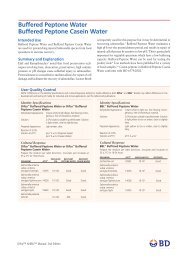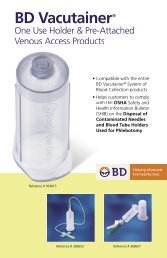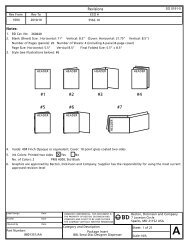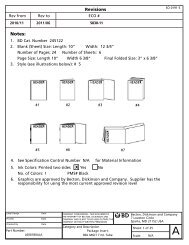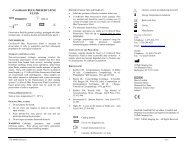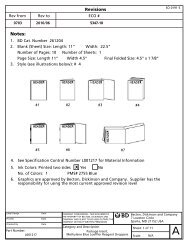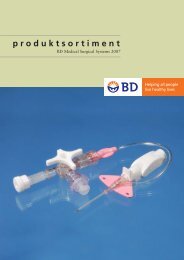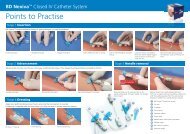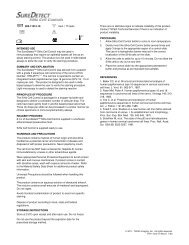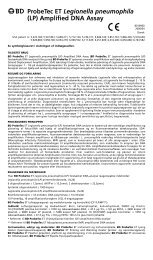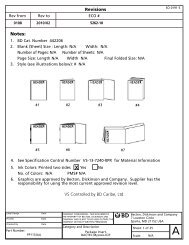You also want an ePaper? Increase the reach of your titles
YUMPU automatically turns print PDFs into web optimized ePapers that Google loves.
Method I: A Quick and Easy Way<br />
to Start<br />
Before you begin, keep the following<br />
guidelines in mind. Use 1 unit of insulin<br />
for every 15 grams of carbohydrate<br />
(1:15). Some people will need more<br />
insulin (1 unit for every 10 grams of<br />
carbohydrate). Others will need less<br />
insulin and use 1 unit for every 20 grams<br />
of carbohydrate. Most people with type<br />
1 diabetes have ratios between 6 and<br />
10, but you may want to start with<br />
a very sensitive level of 15 grams of<br />
carbohydrate per unit of insulin and<br />
see if this works for you.<br />
Method II: The Rule of 500: 5<br />
Add up all the insulin given for 24 hours<br />
and divide it into 500. The answer is<br />
your carb:insulin ratio.<br />
EXAMPLE:<br />
Your total insulin dose is 50 units.<br />
500 divided by 50 = 10<br />
Your carb: insulin ratio is 10:1<br />
Again, this is a starting point, you<br />
need to start with this ratio and adjust<br />
it based on your blood glucose records.<br />
Your Diabetes Team can guide you in<br />
this process.<br />
Keep Detailed Records for About<br />
One Week<br />
The best way to find your carb:insulin<br />
ratio is to use the following Food and<br />
Carbohydrate Counting Record below<br />
and write down:<br />
1. Everything you eat and how much<br />
you eat - you will need to weigh and<br />
measure! (If you know how to count<br />
carbs, include them. Otherwise, use<br />
tables or a calculator to figure out the<br />
carbs in all of the food you eat and<br />
record each amount.)<br />
2. Your insulin dose for each meal.<br />
3. Your blood glucose levels before<br />
the meal.<br />
4. Your blood glucose records after<br />
the meal. (Your blood glucose level<br />
should increase about 50 mg/dl<br />
2 hours after you eat. If it is much<br />
higher or lower than that, your<br />
<strong>Insulin</strong>:Carb ratio will need to<br />
be adjusted.)<br />
NOTE:<br />
If you have never used a carb:insulin<br />
ratio, discuss this with your Diabetes<br />
Team and let them guide you through<br />
this process. Also, like the ISF, you may<br />
have a different carb: insulin for each<br />
meal. Typically, this ratio is lower at<br />
breakfast.<br />
5 Warshaw, H.S. and Kulkarni, K., Complete Guide to Carb Counting. P. 146. American Diabetes Association 2001.<br />
26




